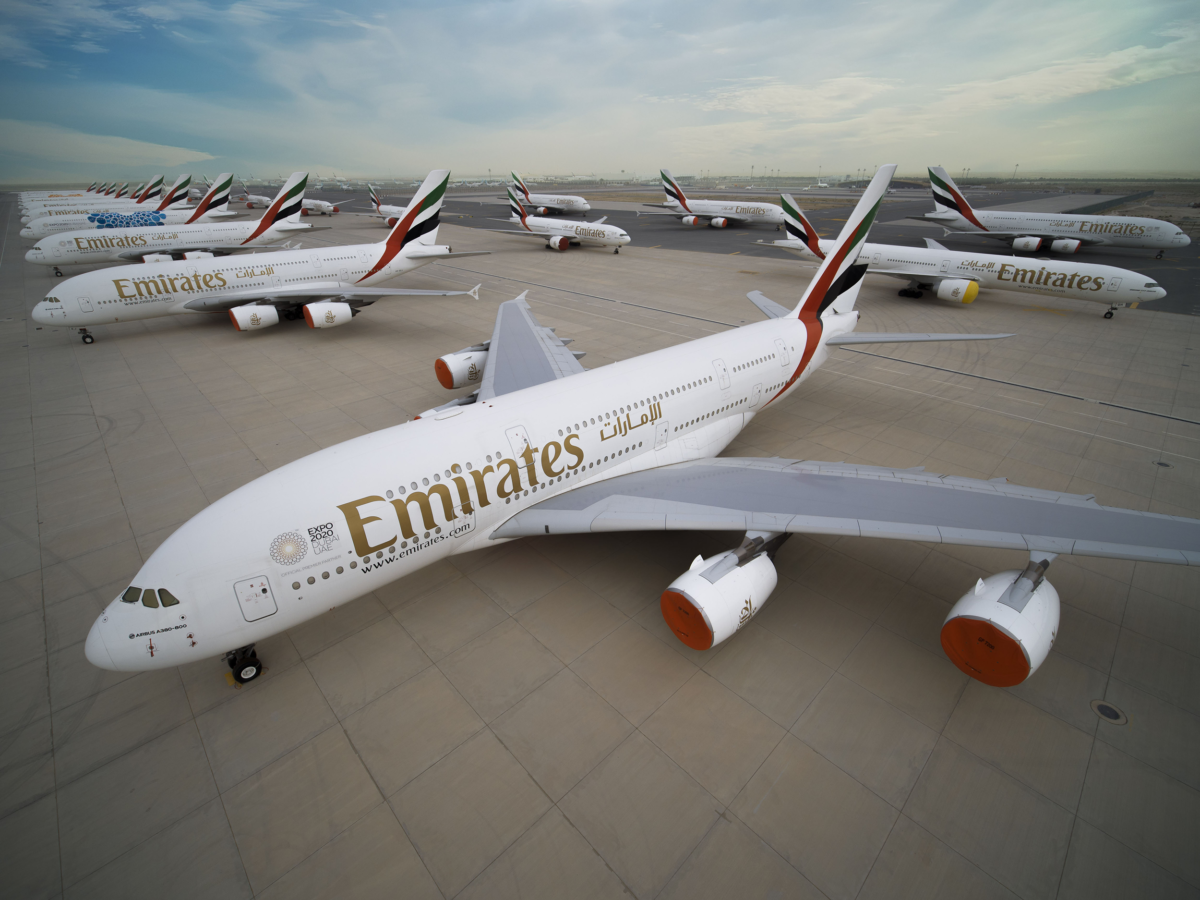With 270 aircraft in their fleet, Emirates has one of the world’s largest portfolios of wide body aircraft.
So when governments began closing borders, they were left with the unenviable task of parking up and maintaining their jets.
Of the 270 aircraft in their fleet, Emirates had initially parked and wrapped up 218 aircraft – 117 at Dubai World Central and 101 at Dubai International airport – this involved more than 15,500 man-hours of work.
While a narrow-body aircraft only requires around 3-4 employees working for eight hours or so to cover it, our aircraft need 4-6 employees working a 12-hour shift.
Ahmed Safa, Emirates’ divisional SVP, engineering
Emirates is currently operating 75 aircraft, both passenger and freighter, on repatriation and cargo missions.
The rest of their jets are undergoing maintenance, including scheduled heavy maintenance, in Emirates Engineering’s hangars.
Routinely, Emirates covers all aircraft that are taken out of operations for more than 48 hours. Much before the pandemic, Emirates has had to cover a significant part of their fleet during the runway closures at Dubai International airport; even during the 2010 volcanic ash cloud disaster, that partially grounded the fleet.
Securing The Fleet and Ultra-Sensitive Avionic Systems
All apertures and openings through which environmental factors – sand, dirt, water, birds and insects – can find their way inside an aircraft are wrapped up and made watertight. This includes engines and air data probes – such as pitot, static, temperature and angle of attack sensors – engine intakes, engine exhausts, APU intakes and APU exhausts.
The interiors – whether cabin monuments, seats or in-flight entertainment equipment – are also protected from the elements. Potable water systems and aircraft fuel tanks are preserved and engine and APU systems are protected. This process also involves the greasing, cleaning and preservation of landing gear and flight control systems. The team turns off all cockpit switches, disconnects batteries and installs control lever locks and window blinds.
Routine Checks and Reactivating the Fleet
After concluding the protection and preservation works, the team completes periodic checks at 7, 15 and 30-day intervals across the fleet. These can include simple walk-around inspections, to ensure all covers are in place and that there is no visible damage or any external leaks. Complex checks include removing the covers and reactivating aircraft systems, idling engines, testing engine bleed air and checking flight control systems.
We need around 4-5 dedicated employees and at least 18-24 hours to put one of our aircraft back into service. Our customers and our employees can’t wait to see our majestic A380s and our powerful 777s grace the skies again, operating our normal schedules and delighting travellers worldwide.
Ahmed Safa, Emirates’ divisional SVP, engineering
Feature Image and Article Source: Emirates




